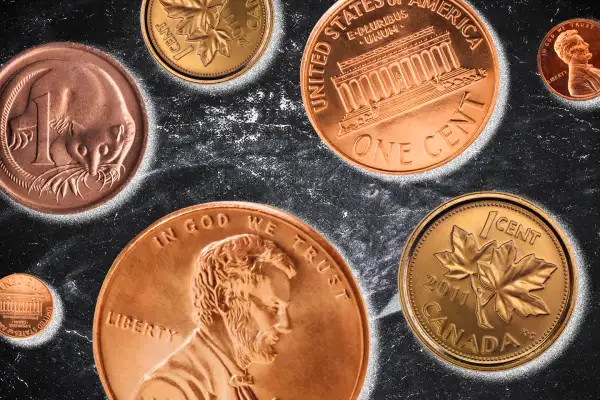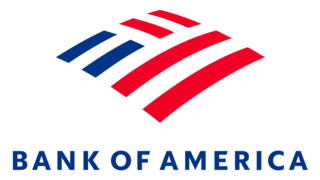Trump's Coin Toss: What's Going to Happen When the U.S. Scraps Pennies?

Well, it's happening. At President Donald Trump's behest, the U.S. is abandoning its cents.
We're talking about pennies, of course: The Treasury Department has announced that it will stop producing the copper-colored coins next year. While it appears that the pennies currently in circulation will remain legal tender for the foreseeable future, the Wall Street Journal reported today that the U.S. Mint will wind down penny production as soon as it uses up its current supply of blanks.
Eliminating the penny has been a priority of the president's since shortly after his inauguration. “For far too long the United States has minted pennies which literally cost us more than 2 cents. This is so wasteful!” he wrote in a February post on his Truth Social network. “I have instructed my Secretary of the US Treasury to stop producing new pennies. Let’s rip the waste out of our great nations budget, even if it’s a penny at a time.”
The Department of Government Efficiency helmed by Elon Musk posted a similar sentiment in January on X, noting that the cost of producing each penny far outweighs its value, a conundrum called “negative seigniorage.”
The U.S. Mint produces billions of pennies each year (more than 3 billion last year), even though each one costs 3.7 cents to produce. Part of the reason the U.S. Mint keeps cranking out all those pennies is — ironically — because Americans don't use them: As a nation, we throw out $68 million in coins every year, and we have another $14 billion or so languishing in coin jars and cupholders, a 2022 Federal Reserve report found. The price tag for the billions of pennies minted in the last year alone was more than $85 million. One potential downside to getting rid of pennies will be an increased reliance on nickels, which are even more economically inefficient: It costs nearly 14 cents to produce a nickel.
Although Congress authorizes U.S. Mint coin production, telling Secretary of the Treasury Scott Bessent to halt penny production isn’t completely out of left field. For an article for The New York Times Magazine last year, reporter Caity Weaver spoke to an expert in the constitutional law of money from Harvard University, who said, “There’s nothing in here that indicates the secretary has to issue [pennies].”
There’s actually precedent for that. In 2020, the U.K.’s Royal Mint said it would stop producing 2p coins (as well as £2 coins) for a decade because there was an overabundance of them. The coins remain in circulation and are recognized as legal tender.
Trump's big coin toss is the culmination of years' worth of attempts to scrap the penny. In 2006, when the price of zinc (the primary metal in pennies) hit a record high, an Arizona congressman proposed a system of rounding for transactions that would render the penny irrelevant. A decade later, two other lawmakers — also from Arizona, where the biggest copper mine in the country is located — introduced a bill to stop the production of pennies. These bills were never taken up by Congress.
What happened when other countries eliminated their 1-cent coins?
In short, not much. Countries that have eliminated low-denomination coins have saved the cost of minting the currency, and cash transactions are rounded up or down in 5-cent increments. If anything, countries that have eliminated the lowest-value denominations of currency often implement subsequent changes to phase out the next-smallest increment. In other words: Watch your back, nickel.
Australia
Australia took 1- and 2-cent coins out of circulation in 1992. More recently, there was a push to get rid of the 5-cent coin, as well — meaning that every transaction would be rounded to the nearest 10 cents. That effort didn’t succeed, but in 2020, the head of the country’s national mint predicted that 5- and 10-cent coins would eventually meet a "graceful death" as fewer people use them.
Canada
When Canada got rid of its penny in 2012, it allowed the coins to remain in circulation and legal tender but encouraged merchants to round monetary amounts to the nearest 5-cent increment and implemented a consumer education program so shoppers would become accustomed to the idea. Today, the practice of rounding up or down to the nearest 5-cent increment when paying with cash has become as ordinary to Canadians as being a fan of ice hockey.
New Zealand
New Zealand eliminated 1- and 2-cent coins in 1990, and then took things a step further in 2006 with the elimination of its 5-cent coin. Researchers found that prices actually went down instead of up. One government official suggested that market competition was enough to keep retailers from trying to game the system.
Sweden
Sweden was an early adopter of the trend. It stopped production of its lowest denominator coins, the 1 öre and 2 öre, back in 1972. (One öre was 1/100 of a krona, the country's primary unit of currency.) In subsequent years, Sweden gradually eliminated other coins smaller than a 1-krona denomination.
Making heads or tails of the question
Most of the arguments for keeping pennies are arguments against phasing out cash transactions in general, which some advocates say is detrimental to low-income people who don’t have bank accounts. The use of cash has been declining for years, though. It accelerated during the pandemic as more people switched to contactless forms of payment. About 18% of transactions were cash-based as of 2022, according to the Boston Fed.
Officials still have to decide how to treat pennies going forward. Some countries that have eliminated their version of the penny simply stopped minting the coins but let the ones already produced remain in circulation. Other countries stopped making them legal tender after giving people a period of time to turn in their coins.
In most places that have eliminated small-denomination coins, cash transactions are rounded to the nearest 5-cent increment. (Cashless transactions are still calculated to the cent.) Some people in favor of keeping pennies argue that consumers would lose out because all of the prices that currently end in nine would be rounded up by a penny. A 2007 study dispelled that concern. Wake Forest University economics professor Robert Whaples found that the odds of rounding up or rounding down are about as even as, well, a coin toss.
More from Money:
Stockpiling Before Trump’s Tariffs? Experts Warn It Could Backfire
The Everyperson's Guide to Making Money in Trump's America
10 Everyday Items Trump's Tariffs Could Make Pricier
The Secret to Saving Money Might Be... Optimism?



